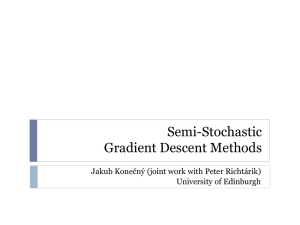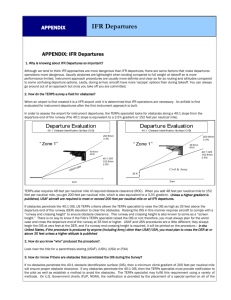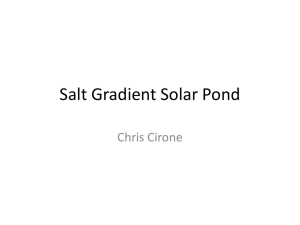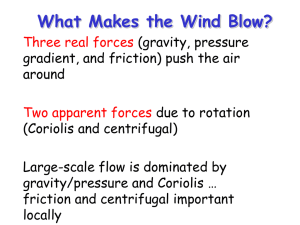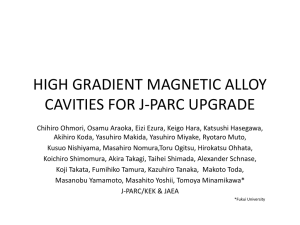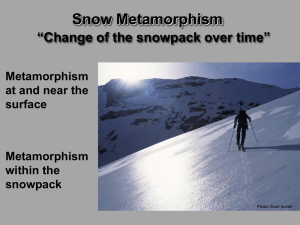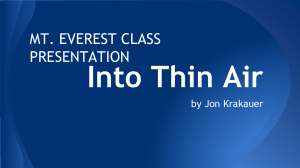Climb Out Factor
advertisement
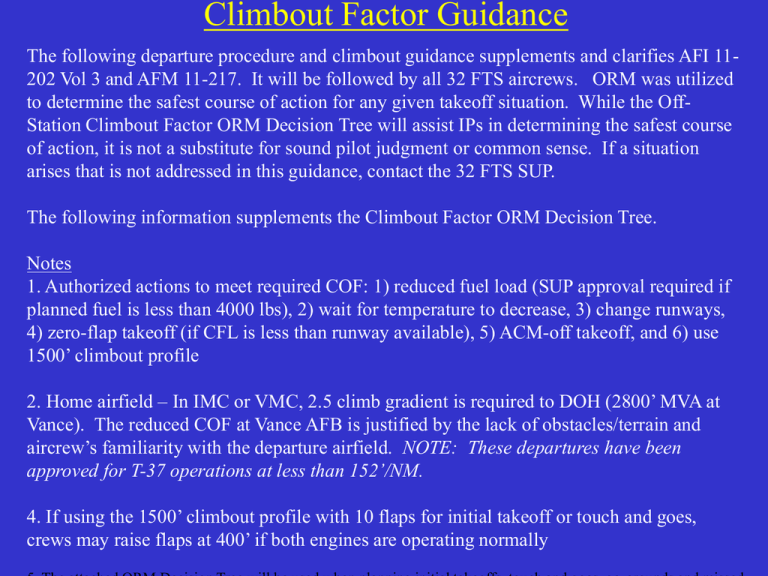
Climbout Factor Guidance The following departure procedure and climbout guidance supplements and clarifies AFI 11202 Vol 3 and AFM 11-217. It will be followed by all 32 FTS aircrews. ORM was utilized to determine the safest course of action for any given takeoff situation. While the OffStation Climbout Factor ORM Decision Tree will assist IPs in determining the safest course of action, it is not a substitute for sound pilot judgment or common sense. If a situation arises that is not addressed in this guidance, contact the 32 FTS SUP. The following information supplements the Climbout Factor ORM Decision Tree. Notes 1. Authorized actions to meet required COF: 1) reduced fuel load (SUP approval required if planned fuel is less than 4000 lbs), 2) wait for temperature to decrease, 3) change runways, 4) zero-flap takeoff (if CFL is less than runway available), 5) ACM-off takeoff, and 6) use 1500’ climbout profile 2. Home airfield – In IMC or VMC, 2.5 climb gradient is required to DOH (2800’ MVA at Vance). The reduced COF at Vance AFB is justified by the lack of obstacles/terrain and aircrew’s familiarity with the departure airfield. NOTE: These departures have been approved for T-37 operations at less than 152’/NM. 4. If using the 1500’ climbout profile with 10 flaps for initial takeoff or touch and goes, crews may raise flaps at 400’ if both engines are operating normally Climbout Factor Guidance 5. The attached ORM Decision Tree will be used when planning initial takeoffs, touch and goes, go-arounds and missed approaches while operating at other than Vance AFB. 6. When using the single engine climb gradient “postage stamp” to determine the COF for a required climb gradient, the correct column must be used to ensure obstacle clearance. DOH is a valid method of ensuring obstacle clearance with no published climb gradient. DOH is an IFR altitude (MSA or MVA) minus 1000’. If a climb gradient must be maintained above 400’ or 1500’ (e.g. up to the minimum IFR altitude), then the “greater than” column (i.e. the right column) must be used. The “less than” column (i.e. the left column) only guarantees a given climb gradient up to 400’ or 1500’. Off-Station Climbout Factor ORM Decision Tree For Initial Takeoff, Go-Arounds, Touch-n-goes, and Missed Approaches** Can 200 ft/nm or the published climb gradient, whichever is higher, be met one engine inoperative? No Yes Continue Mission Have all authorized actions to meet required climb gradient been considered? (See Note 1) Yes No Is there a published climb gradient? Evaluate/apply approved actions in (i.e. Trouble T) Note 1 to meet required climb gradient Yes No If 48 feet/NM is subtracted from published climb gradient, can reduced gradient be achieved. No Yes Can 2.5 gradient (152’/NM) be achieved No Yes Discontinue mission until more favorable conditions exist. SUP approval required. Squadron Supervisor may approve takeoff if the following conditions are met: - Calculated COF must provide a climb gradient equal to or greater than published climb gradient minus 48 feet or 152’/NM to minimum IFR altitude - VFR chart of terrain is available and crew is aware of obstacle location -VMC to min IFR altitude (MSA, MVA, etc) - If IMC departure is required, the DO (or CC) must approve the planned actions - Crew must consider DOH, known obstacles, and planned departure routing ** All calculated climbout factors assume one engine inoperative Cold Weather Climbout General Knowledge Introduction • • • • • Climbout Requirements Cold Weather Second Segment Climb Example Problem (Vance AFB) Conclusion Climbout Requirements • IFR climbs require 200 feet/NM (3.3 % gradient) • VFR climbs require 152 feet/NM (2.5 % gradient) Cold Weather • Icing may require use of engine anti-ice on the ground – If required, engine anti-ice reduces engine performance resulting in 2.0 reduction in COF • Icing may require use of wing and engine anti-ice at or above 400 feet AGL. – Degradation of climb performance is accounted for in “Minimum Climbout Factor Required” Charts Second Segment Climb • If anti-ice is required during the climb profile, you must use the second segment climb to determine your climbout factor that is required. – The second column of the postage stamp (or climb >400 feet) Example Problem • Vance AFB – Weather • • • • • 0oC Broken at 600 feet AGL 1 SM visibility with mist Calm winds Altimeter 29.92 – COF required is approximately 5.2 (+ 2.0 for engine anti-ice reduction) = 7.2 effective COF Charts for Example Charts for Example Charts for Example 152 FT/NM or 200 FT/NM – You must use the second segment climb to determine your overall climb performance. Charts for Example Charts for Example Conclusion • Pay attention to your icing requirements – If icing requires use of anti-ice during the initial climb to minimum IFR altitude, use the second segment climb (or right column in the postage stamp) • Be aware of the NOTES associated with our commonly used performance charts • Climbout only gets more difficult in the winter!!!

